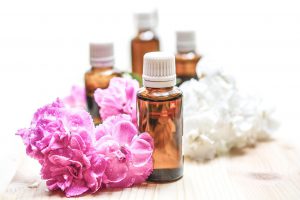
This is the fourth article in my series on natural approaches to mental health which focuses on essential oils. In the previous blogs and videos, I discussed how these plant metabolites and their isolates influence our brains’ biochemistry by modulating various cellular pathways and neurotransmitters. Specifically, I reviewed some of the mechanisms of actions of essential oils and their compounds based on petri dish and rodent studies. I also cautioned on the caveats as well as the potential of these findings in relationship to use in humans.
In my last post, I summarized five things about essential oils that are important to know before implementing them into a therapeutic protocol for brain health. With an understanding of their mechanisms at the molecular level, validation for their reported neurological and psychiatric applications found in clinical trials can be incorporated by integrative practitioners in the mental health field. They now have some more wisdom to evaluate potential interactions, synergism, and contraindications to combining essential oils with other forms of treatment.
In my latest posts, I will provide examples of essential oils that have been confirmed in human trials as well as studies that outline their biochemical actions in vitro and in vivo. Starting off with lavender seemed appropriate, after all it is one of the most well-known and popular essential oils for calming the mind. I also provide a bonus tip on using the “scent of the summer,” citronella. Did you know it does much more than keep pesky mosquitoes away?
Learn more about this quick 1-2-minute tip and about lavender for calming the brain here!
Want to Learn More About Essential Oils and/or My Practice

Visit my website and learn how to get all the best resources for how start using essential oils now, delivered right to your inbox!
This material is for information purposes only and is not intended to diagnose, treat, or prescribe for any illness. You should check with your doctor regarding implementing any new strategies into your wellness regime. These statements have not been evaluated by the FDA. (Affiliation link.)
Disclaimer: This information is applicable ONLY for therapeutic quality essential oils. This information DOES NOT apply to essential oils that have not been tested for purity and standardized constituents. There is no quality control in the United States, and oils labeled as “100% pure” need only to contain 5% of the actual oil. The rest of the bottle can be filled with fillers and sometimes toxic ingredients that can irritate the skin. The studies are not based solely on a specific brand of an essential oil, unless stated. Please read the full study for more information.



